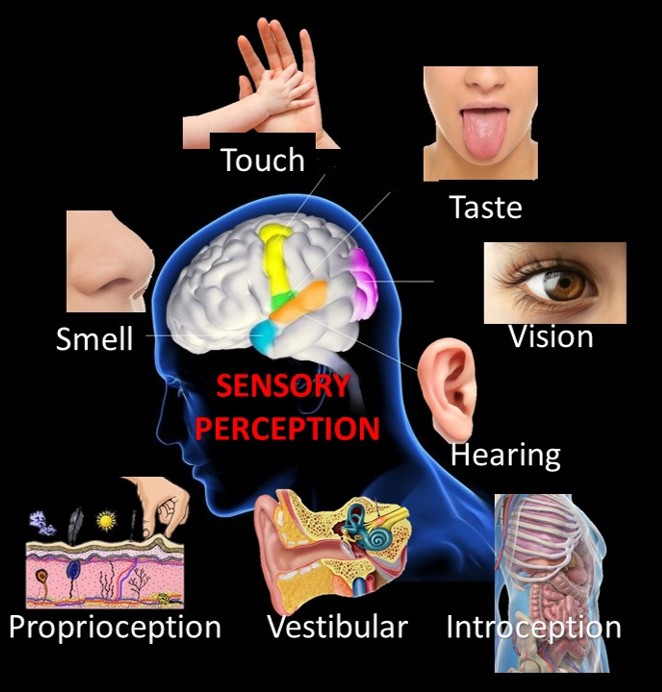
Introception, often referred
to as the eighth sense, is our ability to sense internal bodily states like
hunger, heartbeats, and breathing. This sense is processed by key regions of
the brain which play crucial roles in how we sense and respond to our internal
bodily states.
Key Brain Regions for Interoception and Their
Importance
Insular Cortex (Insula)
- Role: The insula is the
primary region for interoceptive awareness. It integrates signals from internal
organs, such as the heart, lungs, and gastrointestinal system.
- Connections: It’s linked to
many other brain regions, including the prefrontal cortex and the limbic
system, allowing it to integrate both sensory and emotional information.
- Significance: Helps you
become conscious of bodily sensations like a racing heart or stomach
discomfort. Damage to the insula can impair interoceptive awareness, making it
difficult to perceive internal bodily states.
Anterior Cingulate Cortex (ACC)
- Role: Works closely with
the insula to process interoceptive signals and has a role in emotional
regulation.
- Connections: Communicates
with the insula and other limbic structures, playing a key role in emotional
regulation and decision-making based on bodily signals.
- Significance: Involves in
the experience of pain, both physical and emotional, highlighting its role in
integrating bodily and emotional experiences.
Somatosensory Cortex
- Role: Receives sensory
input from the entire body and processes it to create a map of your physical
sensations.
- Connections: Receives input
from sensory receptors throughout the body, providing detailed information
about touch, temperature, and pain.
- Significance: Helps
localize and quantify bodily sensations, contributing to a detailed internal
map of the body's state.
Prefrontal Cortex
- Role: Plays a role in the
cognitive appraisal of bodily sensations and linking them with appropriate
responses.
- Connections: Linked with
multiple brain regions, including the insula and the ACC, and is involved in
planning and complex decision-making.
- Significance: Helps with
higher-order thinking and regulating actions based on interoceptive
information, interpreting signals in the context of past experiences and
current goals.
Limbic System
- Role: Includes structures
like the amygdala and hippocampus, which are involved in emotional processing
and memory.
- Connections: Links
interoceptive signals with emotional responses and past experiences.
- Significance: Influences
how we react to bodily sensations through emotional responses and memories.
Brainstem
- Role: Processes basic
bodily functions such as breathing, heart rate, and arousal.
- Connections: Connected to
both higher cortical areas and the autonomic nervous system, which controls
involuntary bodily functions.
- Significance: Plays a
crucial role in maintaining vital functions like respiration and heart rate,
and in processing visceral sensory information.
Role of Interoception in Everyday Life
- Mindfulness Practices:
Engaging in mindfulness meditation or yoga can enhance interoceptive awareness,
promoting a better understanding of the body's needs and emotional states.
- Medical Interventions:
Improved interoceptive awareness can help manage chronic conditions like
anxiety or irritable bowel syndrome (IBS) by recognizing and responding to
bodily signals early.
- Physical Fitness: Athletes
and fitness enthusiasts often rely on interoception to optimize performance and
recovery by listening to their bodies' signals for rest, hydration, and
nutrition.
Importance of These Regions
- Integration: These brain
regions work together to provide a holistic understanding of your body's
internal state.
- Homeostasis: They help
maintain internal balance by prompting appropriate actions based on
interoceptive signals.
- Emotional and Physical
Health: Proper functioning of these regions is crucial for managing both
emotional and physical well-being.
Understanding and improving
interoception can enhance overall well-being by ensuring timely responses to
your body's needs. By appreciating the intertwined network of brain regions
involved, we see how our mental and physical health are profoundly connected.
| 

